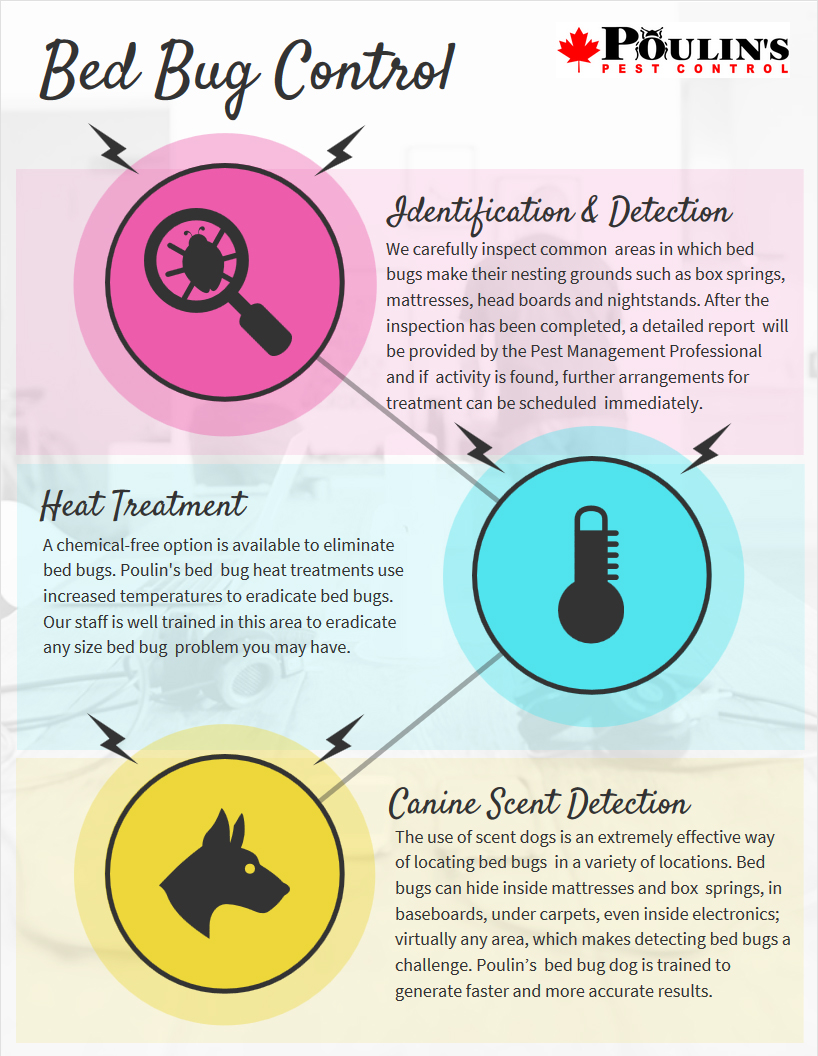Leading Kings Cincinnati Pest Control Services: Pest Control Expert Proficiency
Leading Kings Cincinnati Pest Control Services: Pest Control Expert Proficiency
Blog Article
Kinds of Pest Control: Which Approach Is Right for Your Problem?
When encountered with a pest invasion, the option of a proper technique for bug control is critical in properly taking care of the circumstance. By checking out the various types of bug control methods readily available, individuals can make informed decisions tailored to their distinct conditions, guaranteeing a much more lasting and reliable result in bug obliteration.
Chemical Pest Control
Chemical pest control involves making use of artificial or normally acquired chemicals to handle and remove pest populations effectively. This method is frequently used in farming, forestry, and property setups to deal with a vast array of parasites, consisting of weeds, rodents, and pests. The usage of chemical pesticides can give fast and targeted remedies to pest problems, making it a preferred selection for lots of individuals and companies.
One of the key advantages of chemical parasite control is its capacity to quickly get rid of insects, decreasing the risk of damages to plants, residential or commercial property, and human health. By using details chemicals that target specific insects, this method can effectively regulate invasions while reducing harm to advantageous microorganisms and the setting when applied correctly.
Nonetheless, using chemical insect control also elevates problems about possible adverse effects on non-target varieties, water sources, and human health. It is crucial to adhere to security standards, apply chemicals sensibly, and think about alternative bug control methods to decrease these dangers and make certain sustainable parasite administration techniques.
Biological Parasite Control
Organic parasite control, additionally known as biocontrol, utilizes living organisms to handle and minimize parasite populaces normally. By using the insect's all-natural killers or microorganisms, organic bug control uses a eco pleasant and lasting service to pest management.

Mechanical Parasite Control
Using hands-on and physical approaches to handle parasite populations, mechanical parasite control provides a different method that does not depend on the use of living microorganisms or synthetic chemicals. This technique entails making use of obstacles, catches, or other tools to literally prevent or remove insects. By obstructing pest entrance factors or establishing traps to capture them, mechanical parasite control can efficiently lower infestations without presenting chemicals right into the environment.
One typical instance of mechanical parasite control is using mesh displays on doors and windows to stop pests from entering buildings. This basic yet effective technique functions as a physical obstacle, keeping insects out while enabling correct air flow. Additionally, devices like mousetraps, fly swatters, and ultrasonic repellents fall under the mechanical bug control group.
While mechanical pest control techniques can be labor-intensive and need normal surveillance and maintenance, they offer a sustainable and ecologically pleasant remedy for handling insect problems. By incorporating various mechanical strategies, property proprietors can develop a comprehensive pest control strategy that minimizes reliance on chemical pesticides.
Physical Parasite Control

Some usual physical insect control approaches include using obstacles such as screens or internet to avoid pest entrance, catches to capture and eliminate parasites, and hand-picking to physically eliminate parasites from plants or structures. Furthermore, strategies like heat treatments can be utilized to regulate pests like bed insects by elevating the temperature level to levels that are deadly to the pests.
Physical parasite control is particularly beneficial in incorporated pest administration (IPM) methods, where numerous pest control techniques are integrated for reliable parasite management while reducing the usage of chemicals. By making use of physical pest control techniques, individuals can effectively deal with insect invasions with very little ecological influence.
Integrated Parasite Management
When implementing physical insect control techniques as part of bug monitoring approaches, Integrated Parasite Monitoring (IPM) becomes a comprehensive approach that leverages various techniques to successfully control pest populations. IPM concentrates on long-term prevention of bugs through a mix of organic, cultural, physical, and chemical devices tailored to specific insect issues. By integrating multiple control methods, IPM aims to lessen the dangers related to insects while also reducing dependence on chemical remedies.
One secret element of IPM is the emphasis on surveillance and examining pest populations to identify one of the most ideal control techniques. This proactive approach allows for early treatment and targeted methods, causing much more reliable bug administration. Additionally, IPM advertises eco-friendly methods by prioritizing non-chemical control approaches this link and only making use of chemicals as a last resort.
Conclusion

By making use of the parasite's all-natural killers or microorganisms, organic insect control provides a lasting and ecologically friendly service to pest management. - Kings cincinnati pest control companies
Making use of physical and hand-operated methods to manage pest populaces, mechanical parasite control supplies an alternate method that does not count on the usage of living organisms or artificial chemicals.An effective strategy to taking care of bug commercial pest management populations without depending on chemical or biological approaches involves the usage of physical pest control strategies.When carrying out physical pest control techniques as part of bug management methods, Integrated Pest Administration (IPM) emerges as a thorough method that leverages numerous techniques to successfully control pest populations. Chemical parasite control involves the usage of chemicals, biological bug control makes use of natural killers, mechanical parasite control involves physical barriers, physical pest control includes capturing or removing insects, and incorporated pest administration integrates numerous methods for an alternative strategy to pest control.
Report this page